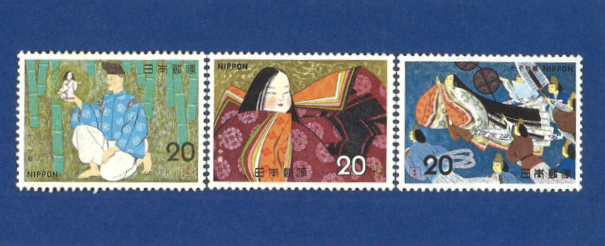quotation:The Encyclopedia of Musical Instruments the SHAKUHACHI
Tokyo Ongaku-sha Co.Ltd 1990
引用:楽器の事典 尺八
(株)東京音楽社 1990年発行
CHAPTER 6: HARVESTING THE BAMBOO
When we arrive at the place where the bamboo is to be harvested, we do not immediately begin to dig out the bamboo. There are only a few bamboo in any grove that can become the material for the shakuhachi, and it is not an easy task to choose the ones that are suitable. It requires much experience and knowledge about geographical conditions, climate, ecology, and so on.
Photograph 6 is a close-up of the madake bamboo. The bamboo that can be used to make the shakuhachi should have a diameter under 3 centimeters at the part that will become the uiaguchi, while the major portion of it should have a diameter of 10.5-11.7 centimeters. The space between joints is important in terms of the placement of finger holes and for the process of nakatsugi, which is used to join the pieces of the instrument together. When a bamboo that meets these requirements is found, it is harvested in the following way :
Photograph 7-1 One examines whether the thickness and the length between the joints located on the part of the trunk grows above ground are suitable. Then the roots that are close to the surface are cut with a scissors.
Photograph 7-2 One examines the spacing of the joints on the subterranean portion.
Photograph 7-3 The necessary length of the portion above the ground is cut with a saw.
Photograph 7-4 In order not to damage the portion of the root that will be used, one digs with a hoe placing some distance between the tool and the roots.
Photograph 7-5 The subterranean stalk and roots are severed and removed.
Photograph 7-6 The remaining portion of the subterranean stalk and roots are cut away with a hatchet.
The portion of bamboo that has been dug out in this way is carried away after removing some of the soil that clings to it. Bamboo that has been dug out and trimmed is termed kiji. Sometimes the kiji (see glossary) that has been carried back contains earthworms and hibernating frogs. Photograph 8 shows the bamboo when the subterranean stalk has been
completely cut off.
The soil is then completely removed from the kiji that has been dug out. Sometimes when the fine roots are removed, it is possible to discern the resl shape of the stump. This is both unsettling and exciting work because sometimes the shape is different from what was imagined and sometimes it is better than was originally thought.
Photograph 40 shows a series of pictures that illustrate the process of manufacture beginning with the harvest of the bamboo. But the actual process and the order shown in the pictures are not the same.
In Japan there are the words “yabunigami”and “yabuhebi”. When we enter the grove in order to harvest bamboo, it is not unusual to encounter snakes, so it is important not to move about too much and to search with one's eyes for the bamboo that can be made into the shakuhachi. The movement of these sharp eyes is called “yabunigami”. And”yabuhebi” means to disturb the snakes of the grove, in other words to do an unnecessary thing.
Fundamental studies of the physiology, ecology, and natural properties of the bamboo, as well as its pharmacological and disaster一prevention uses, have not been pursued sufficiently. Bamboo is light but strong, very elastic and reasonably priced, and resistant to both electricity and heat, so Japan Railroads alone is supplied with more than 1000 bamboo ladders a year.
In the literary work Taketotri monogatari[“The Tale of the Bamboo-cutter”]which dates from the early Heian Period, the plot of the story suggests the mystical nature of the bamboo. An old bamboo-cutter finds a girl among the bamboo and raises her. After three monthes, she becomes an adult who is called “Kaguya-hime"[“Princess Kaguya”], but flees to the moon, in order to escape the attentions of the emperor, her suitor (Photograph 46-2) . The bamboo-cutter who appears in the story chose the bamboo according to the requirements of how it would be used. This suggests that in the past as in the present, the harvesting of bamboo was a highly specialized occupation.
Photograph 6
Bomboo (Madake) close up shot

Photograph 7-1
Harvesting the bamboo — the roots that are surface are cut with scissors.

Photograph 7-2
Harvesting the bamboo ― one examines the spacing of the joints on the subterrean prtion.

Photograph 7-3
Harvesting the bamboo ― the necessary length of the bamboo is cut.

Photograph 7-4
Harvesting the bamboo ― digging a hole

Photograph 7-5
Harvesting the bamboo --removing the roots snd shaking off the soil.

Photograph 7-6
Harvesting the bamboo ― the subterranean stalk and roots are cut away with a hatchet.

Photograph 46-2
"Kaguya-hime" from〈Japanese Folktale〉series.

The Encyclopedia of Musical Instruments CONTENTS
⇐previous page the next page⇒


